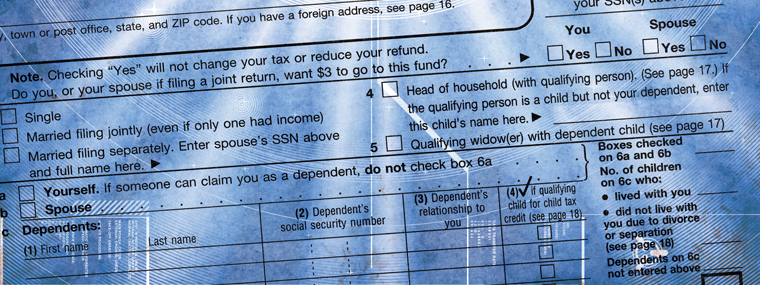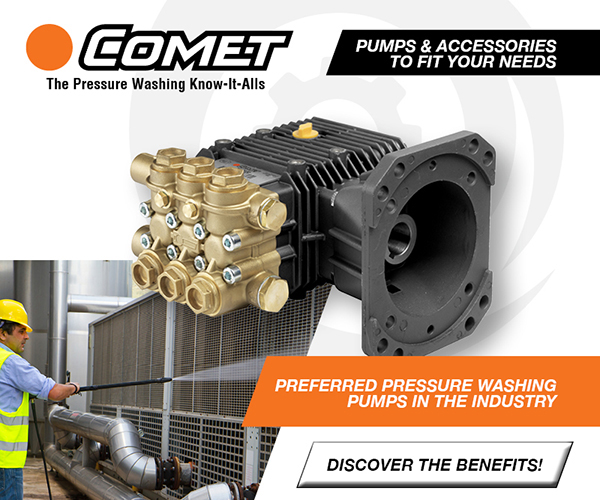
Financial: The Hidden Costs of Overlooked Payroll Taxes
By Mark E. Battersby / Published March 2014

Payroll taxes are the taxes levied primarily on wages and self-employment income that every pressure washing and waterjeting contractor and business is required to withhold and/or to pay on behalf of its employees. Since Federal payroll tax collections generated $845 billion in 2012, or 35 percent of all federal revenues, it is little wonder that lawmakers and the Internal Revenue Service attach so much importance.
Employers are required to withhold state and federal income taxes as well as social security and Medicare taxes from the wages of employees. Every employer is also required to pay a matching amount of social security and Medicare taxes for employees and to pay state and federal unemployment tax.
The responsibility for payroll taxes continues even after paychecks have been issued to employees. The business is responsible for paying the employer’s share of payroll taxes, for depositing tax dollars withheld from the employees’ paychecks, preparing various reconciliation reports, accounting for the payroll expense through their financial reporting, and filing payroll tax returns.
Nuts and Bolts
Payroll taxes are the state and federal taxes that a pressure cleaning business, as an employer, is required to withhold and/or to pay on behalf of employees. The employer portion of payroll taxes include the following:
• Social Security taxes (6.2 percent up to the annual maximum—$117,000 in 2014 up from $113,700 in 2013)
• Medicare taxes (1.45 percent of wages) plus an additional levy on higher incomes
• Federal unemployment taxes (FUTA)
• State unemployment taxes (SUTA)
• Various local tax withholdings (such as city, county, or school district taxes, state disability, or unemployment insurance).
As an employer, the pressure cleaning business is required to pay a matching amount of FICA taxes for employees. Self-employed individuals are responsible for the entire FICA tax rate of 15.3 percent (12.4 percent Social Security plus 2.9 percent Medicare).
Voluntary Payroll Deductions
Voluntary deductions are often used to pay for various benefits such as health or life insurance premiums, retirement or 401k plan contributions, as well as employee stock purchase plans including ESOP plans. However, voluntary payroll deductions are withheld from an employee’s paycheck only if the employee has agreed to the deduction.
Self-Employed
Although there have been rumblings from the White House and Congress over the years about subjecting the profits of pass-through entities such as S corporations to self-employment taxes (SE Tax) as a way to raise government revenues, so far this has not happened. Operating as an S corporation or other pass through entity still affords the opportunity to save taxes versus operating as a regular C corporation, sole proprietorship, as a general partnership or limited liability company (LLC).
A regular C corporation will generally zero out profits before year-end by paying out bonuses or other compensation to the operation’s shareholders. This zeroing out eliminates any tax payable by the corporation, although the bonuses paid are subject to payroll taxes.
In contrast, an S corporation is a pass-through entity and does not pay income taxes. It still prepares an income tax return; however, its profits and losses are reported to the shareholders via Schedule K-1, and the income/losses are reported by the shareholders on their personal tax returns. Any resulting taxes are then paid by the shareholders in connection with their personal tax returns.
Shareholders are required to pay themselves reasonable compensation—which is subject to payroll taxes for the services they provide; however, any corporate profit over and above such reasonable compensation may be paid out as dividends—which are not subject to payroll taxes.
With an unincorporated pressure cleaning business (e.g., sole proprietorships, general partnerships, and LLCs), all profits are subject to a self-employment or SE Tax. When computing the profits subject to SE tax, there is no deduction for the owner’s health insurance premiums or retirement plan contributions. In contrast, those items are not subject to payroll taxes in corporations, except for voluntary deferrals by a shareholder-employee into a retirement plan.
Adding Up the Medicare Tax
For most Americans, the Medicare portion of the FICA tax remains at 2.9 percent, of which half (1.45 percent) is paid by employees and half by employers. Unlike Social Security, there is no limit on the amount of wages subject to the Medicare portion of the tax. This results in a total FICA tax for most wage earners of 15.3 percent (Social Security plus Medicare), half of which is paid by employees and half by employers.
For high earners, Medicare takes a somewhat larger bite thanks to a provision of the Patient Protection and Affordable Care Act. Beginning in 2013, the employee-paid portion of the Medicare FICA tax became subject to the 0.9 percent Additional Medicare Tax. An employer must now withhold the Additional Medicare Tax from the wages or compensation falling above certain threshold amounts it pays to an employee. The threshold amounts are $250,000 for married taxpayers who file jointly, $125,000 for married taxpayers who file separately, and $200,000 for single and all other taxpayers in a calendar year.
The Additional Medicare Tax on amounts above the threshold amounts was raised to 2.35 percent from 1.45 percent; the employer-paid portion of the Medicare tax on these amounts remained at 1.45 percent.
Small Employer Program
The IRS’s so-called “Form 944 Program” is limited to employers with annual estimated employment tax liabilities of $1,000 or less. Most qualifying employers can pay their employment taxes annually with their Form 944, rather than making monthly or semi-weekly deposits.
After applying, and being accepted by the IRS, an employer can file an annual Form 944, rather than a quarterly Form 941. Generally, Form 944 is due on January 31 of the year following the year for which the return is filed.
Those Potentially Expensive Pitfalls
One of the nastiest and most feared taxes currently imposed is the so-called “Trust Fund Penalty Tax,” a whopping 100 percent penalty on payroll taxes withheld from a pressure cleaning contractor or business’s employees, but not forwarded to the Federal government. The fear stems from the IRS’s authority to assess the penalty on “responsible parties,” a label that can include the owners, shareholders, partners, members, managers, and officers in a pressure washing or waterjetting business.
The IRS aggressively pursues unpaid payroll taxes and is quite willing to prosecute those who willfully fail to file payroll tax returns or pay payroll taxes. More often than not, the IRS seeks to collect the unpaid taxes from anyone who had anything to do with running the pressure cleaning business, particularly those who made the financial decisions, handled the books, or signed the checks.
Because the laws surrounding employment and taxes are complex and change so often, it is not surprising that a whopping 40 percent of small businesses reportedly entrust their payroll and payroll tax chores to a third party. The business however, remains liable for withholding payroll taxes and paying them over to the government.
Recently, some businesses were stunned to discover their payroll taxes were not paid by their payroll service. And worse yet, their payroll tax money and their payroll service had both disappeared. Obviously, the reports about questionable tax practices by some payroll services should raise concern among small business owners.
Correcting Employment Tax Errors
The IRS has developed a series of “X” amended return forms used to report adjustments to employment taxes and to claim refunds of overpaid employment taxes. These forms correspond and relate line-by-line to the employment tax return they are correcting.
Employers should use the “X” forms to correct employment tax errors as soon as they are discovered. For example, use Form 941-X, Adjusted Employers Quarterly Federal Tax Return or Claim for Refund, to correct errors on a previously filed Form 941.
Employers will continue to use Form 843, Claim for Refund and Request for Abatement, when requesting abatement of assessed penalties and interest. In addition, there is no “X” form for the Form 940, and taxpayers will continue to use a Form 940 for amended returns.
The IRS requires businesses paying more than $50,000 annually in payroll taxes or other federal taxes, as well as most incorporated pressure cleaning businesses, to pay them through the Treasury Department’s Electronic Federal Tax Payment System (EFTPS).
Insourcing Outsourcing
For years, few other business processes were outsourced as much as the lowly task of payroll. Indeed, the function of paying employees has long been targeted as a time-consuming effort that robs a business of resources better committed to core competencies. Today, as software tools become easier to use and vendors begin focusing on smaller businesses, a shift is taking place. Many contractors and business owners are finding that payroll can often be done better and less expensively in-house.
Whether done within the pressure cleaning business or out-sourced, contractors and business owners preparing for the start of 2014, face daunting payroll tax responsibilities, as well as staying in compliance with ever-changing labor laws. Small business with only a few employees—even one employee—need to keep up with continually changing regulations and keep the payroll process running smoothly and on time.





